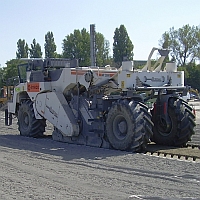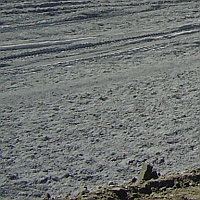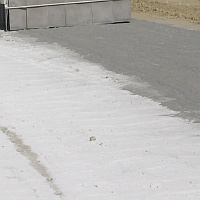
Soil stabilization is a group of earthwork technologies to improve soil characteristics during the construction process and to improve mechanical and load bearing properties. The two main technological methods are soil improvement and soil consolidation.
Soil stabilization methods are used in heavily soaked soils, which as a result, cannot be sufficiently compacted or are not suitable for construction traffic. By mixing in binding agents (mostly lime, cement or mixtures of both) water content is reduced, and material’s plasticity, compactability and load bearing capacity is immediately improved.
In soil improvement, binding agents are mixed into the existing soil to improve its paving properties and compactability, making the soil highly unsusceptible to water at the same time. These improved material properties facilitate the completion of construction work on the terrain.
Soil consolidation is also achieved by mixing binding agents into the existing soil, which improves its volume stability and permanent bearing capacity, making it frost-resistant at the same time. Typical applications of soil consolidation are in the construction of roads, railways and airports, as well as in the development of industrial estates or new housing areas.
The most beneficial application of soil stabilisation is when it is taken into consideration right from the design phase. If mechanical properties of the stabilised earthwork are counted for, than upper structures can be designed accordingly and considerable cost reduction can be realised.
On the other hand, due to extreme weather conditions and unforeseen soil conditions, the need for soil stabilisation is only realised during the construction process. In these situations, to avoid excess cost and construction delays, usually the only possible technology is to stabilise the existing soil.
Key Benefits:
- Improved load bearing capacity: Soil stabilization with lime or cement results in an immediate improvement of the soil’s mechanical properties, increasing its bearing capacity at the same time.
- Optimum water content: Mixing binding agents into the existing soil achieves optimum water content. Soils that were muddy and wet before soil stabilization are now much better suited for handling, placing and compacting.
- Environmental friendliness: Soil stabilization is an environmentally friendly method, since it requires significantly less transports when compared to soil exchange, while saving precious natural resources at the same time.
- Improved weather resistance: Soil stabilization results in an improvement of the soil’s bearing capacity both in the short and in the long term, making it resistant against water and frost.
- Homogeneous mix: Soils from many different sources are often transported to one job site. Soil stabilizers produce a homogeneous mix from these soils of different origins.
























